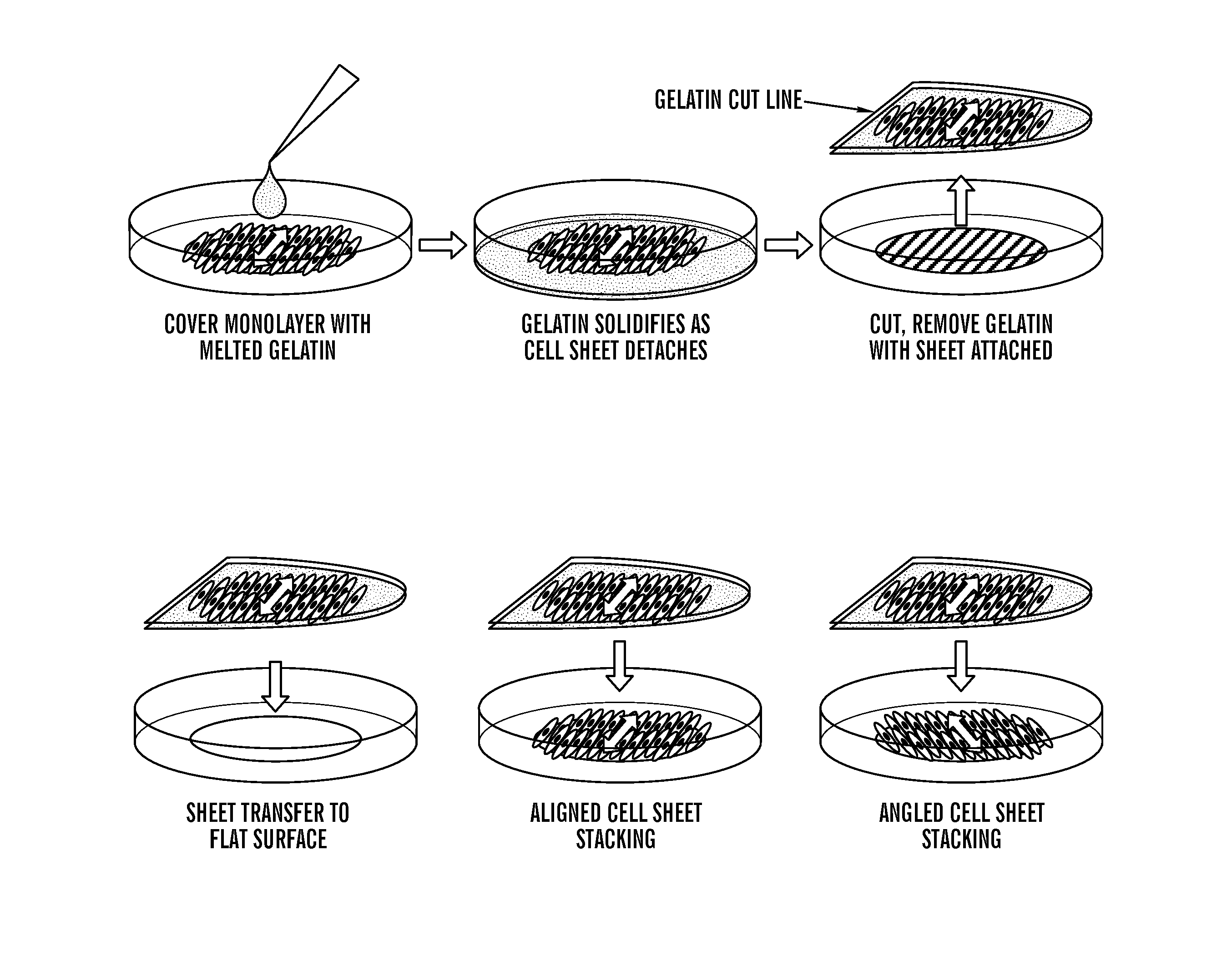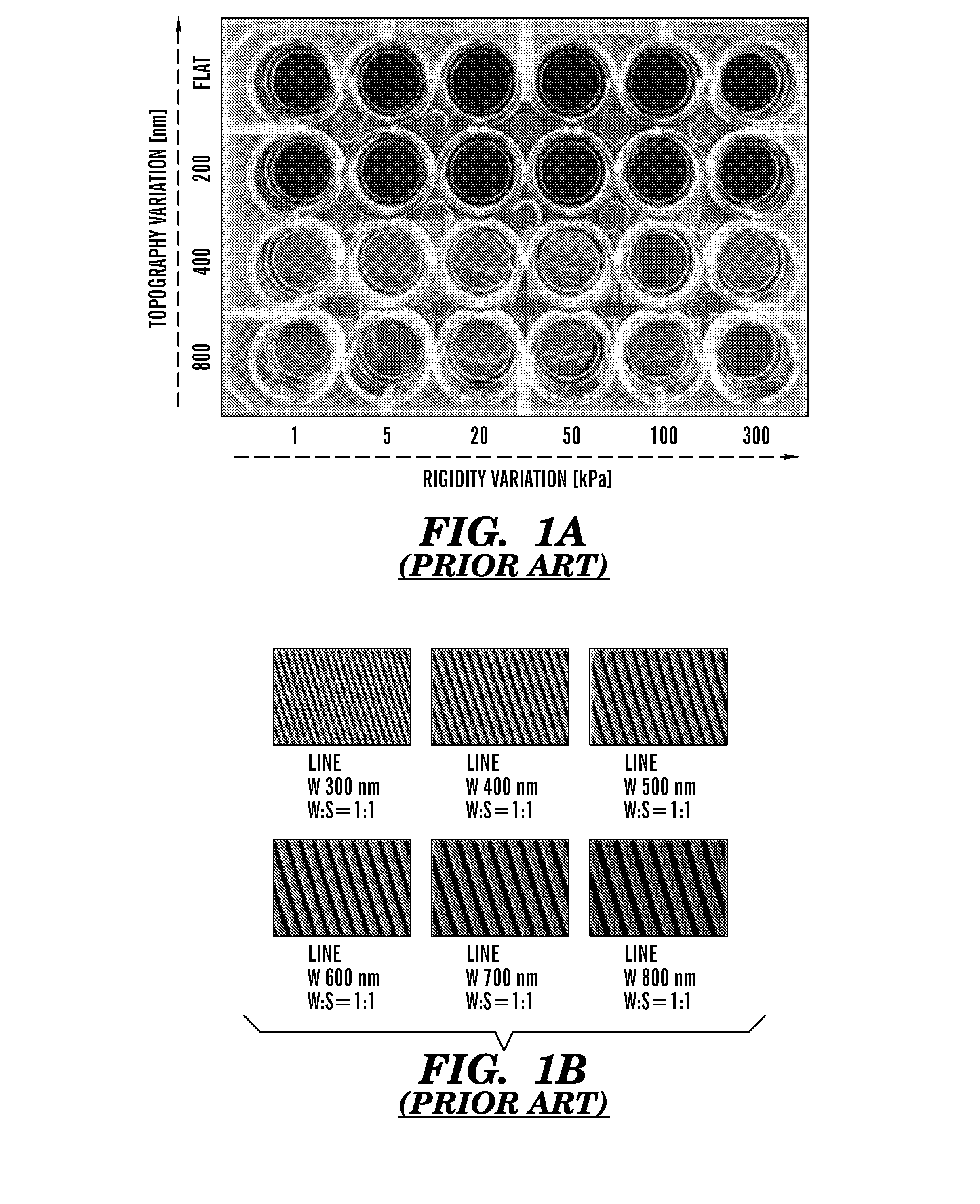Systems and method for engineering muscle tissue
a technology of muscle tissue and engineering methods, applied in the field of cell growth and tissue engineering, can solve the problems of inability to reproduce the multiscale effects of complex ecm structures, inability to fully understand the effect of cell and tissue function engineering control, and inability to fully understand the effect of cell and tissue function, etc., to achieve accurate recapitulation and high throughput format
- Summary
- Abstract
- Description
- Claims
- Application Information
AI Technical Summary
Benefits of technology
Problems solved by technology
Method used
Image
Examples
example 1
[0655]The development of a novel “off-the-shelf” engineered heart tissue platform for high throughput drug screening would have wide applicability both for safety testing and the identification of new therapeutic compounds. Many promising compounds are found to have unanticipated cardiotoxic effects (e.g. pro-arrhythmic interference cardiac ion channels), and this remains the most common reason that otherwise efficacious drugs are removed from the market. Regulatory agencies require preclinical safety screens in heterologous systems (e.g. cultured cells genetically modified to overexpress a particularly susceptible ion channel, such as the HERG channel) and animal models, but both have important limitations. Heterologous systems lack the full constellation of ion channels and signaling pathways present in intact cardiomyocytes, while animal studies are very expensive, low-throughput and often limited to relatively short time-points. There are also important differences between human...
example 2
Development of a High Throughput and Patient-Specific Tissue Culture Platform with Different Nanotopographical Patterns and Stiffnesses
[0665]Development of ANP Cell Culture Substrates with Tunable Topography and Stiffness.
[0666]Using a PEG-based materials, the inventors have generated an ANP using well-established biocompatible hydrogel polymer whose mechanical and topographic properties can be modulated by UV-assisted capillary force lithography. In particular, the inventors synthesized polyethylene glycol-gelatin methacrylate (PEG-GelMA) composite prepolymers and then fabricated nanogroove structures on large areas (>10 cm2). Modulation of the concentration of PEG and GelMA allows for control of the Young's modulus of the material to match the rigidity of myocardium. The gelatin component of the composite biomaterial helps promote cell attachment. To account for the scale of the ECM cues and possible variability in the diameter of the ECM fibrils in the heart tissue, the widths of...
example 3
Maintenance of Human iPSC Derived Cardiomyocytes in Long Term Culture on Substrates with Different Nanotopographical Patterns and Stiffnesses Sustains Cellular and Tissue-Level Electrophysiological and Contractile Function
[0669]Optimization of Cellular Function.
[0670]The inventors have identified an optimal combination of nanotopography and substrate stiffness that maximizes cell survival and maintains cellular function at both the single cell and monolayer level. Multi-well plates can be used for studies of confluent monolayers. As an additional biomimetic cue, electrical pacing can be applied to the cell culture for up to 3 months. Optical mapping is performed using voltage- and calcium sensitive dyes, thereby measuring action potential duration (APD), calcium transient amplitude (CaT), spontaneous beat rate, average conduction velocity (av CV), conduction anisotropy ratio (AR), maximum capture rate (MCR), and heterogeneity index of action potential duration (HI) for comparison to...
PUM
| Property | Measurement | Unit |
|---|---|---|
| Fraction | aaaaa | aaaaa |
| Depth | aaaaa | aaaaa |
| Depth | aaaaa | aaaaa |
Abstract
Description
Claims
Application Information
 Login to View More
Login to View More - R&D
- Intellectual Property
- Life Sciences
- Materials
- Tech Scout
- Unparalleled Data Quality
- Higher Quality Content
- 60% Fewer Hallucinations
Browse by: Latest US Patents, China's latest patents, Technical Efficacy Thesaurus, Application Domain, Technology Topic, Popular Technical Reports.
© 2025 PatSnap. All rights reserved.Legal|Privacy policy|Modern Slavery Act Transparency Statement|Sitemap|About US| Contact US: help@patsnap.com



